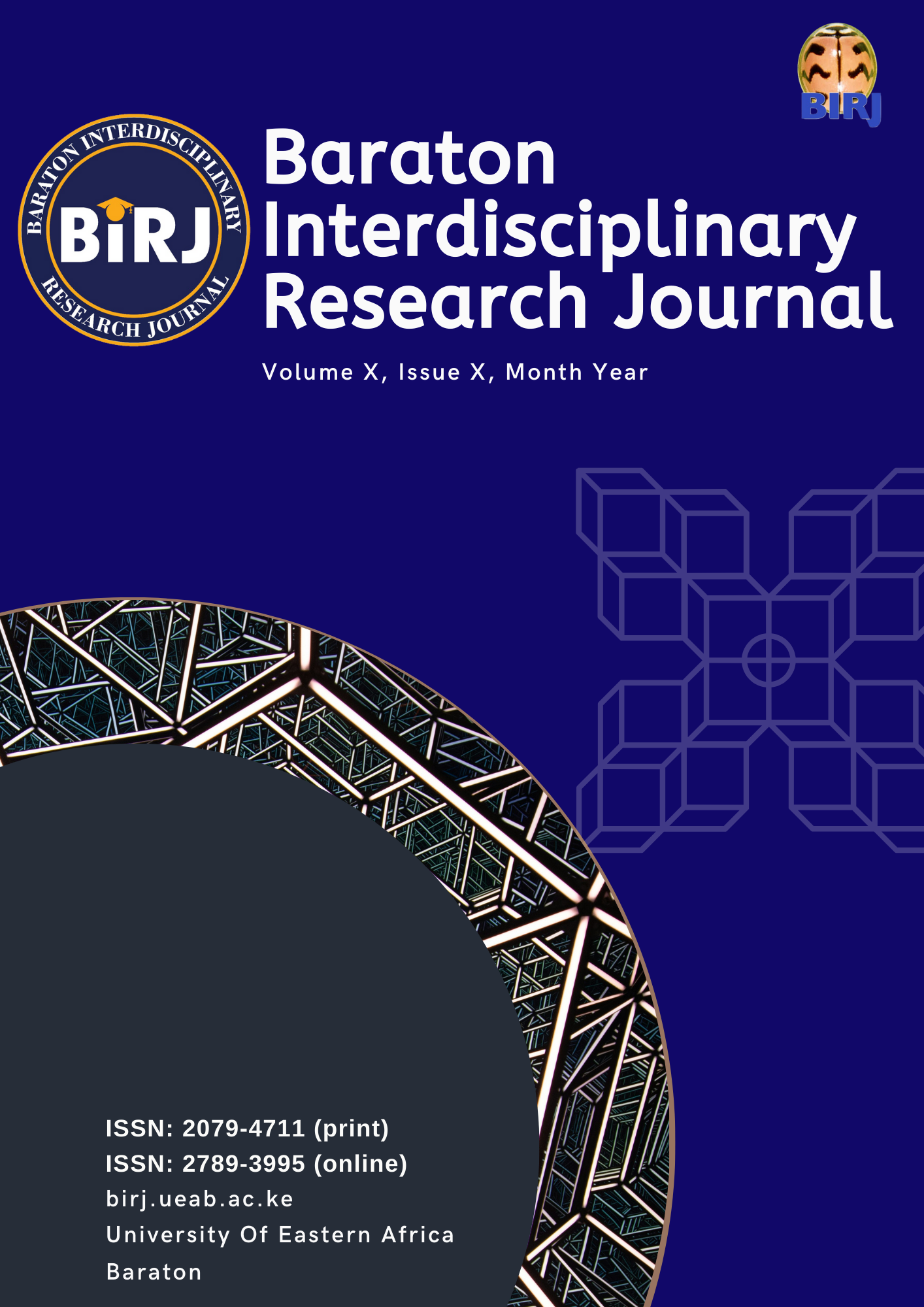E-LEARNING NEEDS ASSESSMENT AT THE UNIVERSITY OF EASTERN AFRICA, BARATON
Keywords:
Blended learning, digital, e-learning, face-to-face learning, ICT, traditional learningAbstract
In the modern days of globalization and digitization, many institutions of higher learning have embraced a
blended learning, an integration of e-learning and traditional (face-to face) instruction as a means of meeting
the escalating demands by learners to utilize technology in classroom instruction. Although the University of
Eastern Africa, Baraton is one of the early private universities to be recognize by the government of Kenya,
and make use of the modern technology, there seems to be a general tendency of reluctance, and to some extent
resistance in the part of lecturers to embrace the concept of e-learning or blended learning. Many of the lectur
ers are not excited to use the modern technology in the classroom instruction. However, the 21st century learn
ers in their class are digital natives, who are restless unless classroom instructions are supported by technology.
In addition the current trend demands that if not proficient, at least lecturers should be willing to learn and use
technology in their classroom instruction. Therefore, this paper is to address this gap by gathering basic infor
mation on the technology use and assess the university’s readiness to use a blended learning. Data was gathered
using a self-administered survey questionnaire from regular and contract faculty, chairpersons of departments
and school deans of the University of Eastern Africa, Baraton to investigate their e-learning readiness and carry
out a diagnostic e-learning readiness assessment of faculty in order to determine the levels of e-learning readi
ness. Sixty five (65) questionnaires consisting of 10 categories of questions were distributed, out of which 44
were returned (68% response rate). The analysis of data and interpretation of the findings are based on the 44
questionnaires returned
Results revealed that majority of the respondents have not integrated e-learning nor currently using e-learning
but expect to use e-learning for teaching and learning in the future.
Thus, e-learning readiness of UEAB faculty is yet at the lowest level of Tomei’s Taxonomy for the technology.
Most faculty possess minimum degree of skills and competency with respect to ICT
Downloads
Published
License
License Terms
All articles published in the Baraton Interdisciplinary Research Journal (BIRJ) are licensed under a Creative Commons Attribution-NonCommercial-ShareAlike 4.0 International License (CC BY-NC-SA 4.0).
This license permits users to share (copy and redistribute) and adapt (remix, transform, build upon) the material for non-commercial purposes, provided that proper attribution is given to the original authors, a link to the license is included, and any derivative works are distributed under the same license.
Full license details: https://creativecommons.org/licenses/by-nc-sa/4.0/
Most read articles by the same author(s)
- Korso Gude Butucha, Yona Balyage, Fanta Hotamo, BENEFITS AND CHALLENGES OF COLLABORATION IN THE INSTITUTIONS OF HIGHER LEARNING IN EAST-CENTRAL AFRICA DIVISION , Baraton Interdisciplinary Research Journal: Vol. 4 (2014): Special Issue
- Korso Gude Butucha, EMERGING TRENDS IN STUDENT ENGAGEMENT IN THE 21ST CENTURY CONTEMPORARY WORLD , Baraton Interdisciplinary Research Journal: Vol. 6 (2016): Special Issue
- Yona Balyage, Korso Gude Butucha, Fanta Hotamo, ACCREDITATION OF INSTITUTIONS OF HIGHER LEARNING IN A GLOBAL ERA: PROSPECTS, CHALLENGES, AND IMPLICATIONS , Baraton Interdisciplinary Research Journal: Vol. 5 (2015): Special Issue
- Korso Gude Butucha, COMPARISON OF STAFF AND FACULTY PERCEPTIONS OF ORGANIZATIONAL COMMITMENT IN A SELECTED PRIVATE INSTITUTION OF HIGHER LEARNING IN KENYA , Baraton Interdisciplinary Research Journal: Vol. 7 (2017): Special Issue

